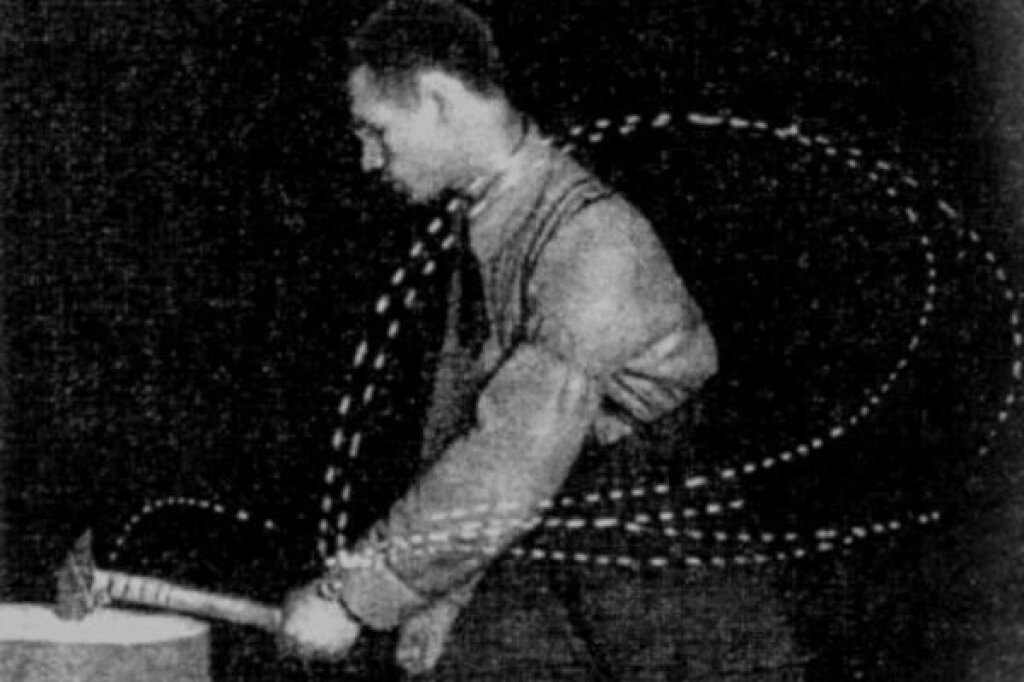Emma Larson is a first-year PhD student in History at Princeton University, where she explores the political, cultural, and economic tools of Russian colonization in Central Asia.
After wandering for hours through a vast ocean of steppe, Isatai, Alim, and Tepe find themselves face-to-face with a balbal, one of the anthropomorphic funeral stelae that have been used to honor ancestors in Eurasia since the Bronze Age. “How do you know this place?” asks Isatai, confused by the confidence with which Tepe has led them. “One does not get lost in his native land,” Tepe responds with a smirk. The smirk proves to be prescient: after another day of wandering, Isatai approaches the stela again, this time lost, confused, and slowly coming to terms with the fact that he no longer possesses the knowledge that made the steppe intelligible to the very ancestors the balbal is meant to honor.
The ethno-horror film QAS, directed by Aisultan Seitov and released in 2022, uses Isatai’s loss to memorialize the cultural destruction that Kazakhs suffered during the Soviet Union’s collectivization drive in the early 1930s. Taking place during the Asharshalyk, the word Kazakhs use to refer to the famine caused by the collectivization of the steppe, the film revolves around Isatai’s struggle to save his auyl (village) from the hunger that would claim the lives of at least 1.3 million Kazakhs from 1931 to 1933. It uses a wealth of Kazakh symbols and the techniques of slow-burn horror to convey the madness that Isatai descends to as he suffers from the mental and physical deterioration of starvation.
Analyzing QAS as a memorial to the loss suffered by Kazakhs during the Asharshalyk may not seem like an obvious interpretation. Kazakhstan already has a handful of prominent physical memorials to honor famine victims in the cities of Almaty, Astana, and Pavlodar. Plus, the film’s narrative structure pushes back against the notion that only modernist “non-stories” can allow for an accurate representation of the inhumane horrors of mass death.
Yet if the purpose of a memorial is to craft collective meaning out of the individualized experiences of a historical trauma, QAS may be the closest thing that Kazakhstan has to a genuine memorial of the Asharshalyk. By ignoring the most contentious aspects of the famine’s history, the film places the loss of Kazakh language, culture, and memory spurred by the Asharshalyk at the forefront of its memorialization. Though it does not tell the whole story of collectivization in Kazakhstan, QAS does leave viewers with the tale’s end: by 1933, the only future that remained for Kazakhs was an explicitly Soviet one.
QAS’s capacity to memorialize the loss caused by the Asharshalyk is inherently linked to its medium as a film. Though Kazakhstan’s physical memorials to the famine represent a step towards memorialization, the physicality of these monuments and their rootedness in specific locations leaves them unable to reckon with the immense mass of territory visited by starvation in Kazakhstan in the early 1930s. It is sensible for memorials to the site-specific suffering of gulags and concentration camps to be linked to the places in which this suffering took place. However, the decentralized nature of famine makes attempts to rectify “missing graveyard syndrome,” the desire for cathartic ceremony in the absence of physical markers of suffering, by linking the Asharshalyk to distinct locations fall flat.
Film, on the other hand, is physically unconstrained. Able to be screened throughout the entirety of Kazakhstan, QAS is not only more accessible to a larger audience than physical memorials are, but also represents a more authentic representation of the uniquely diffused form of mass death caused by famine.
QAS’s memorialization relies not just on its medium as a film, but also on the unique characteristics of horror. The idea that horror movies represent a society’s collective anxieties is nothing new, and framing QAS as an ethno-horror film allows the Seitov to remind viewers that the trauma and loss of the Asharshalyk continue to haunt Kazakh society today. As a result, QAS complicates how pre-existing memorials to the Asharshalyk inject the collective memory of the famine with a sense of feel-good heroism that emphasizes Kazakhs’ resistance to Soviet power and the Kazakh nation’s capacity to survive. Fading to black under the sound of Kazakh orphans learning to read the Soviet Union’s Cyrillic script, QAS leaves no room for valor and makes clear that Kazakhs’ most viable option at the end of the Asharshalyk was to work within the Soviet Union’s attempts to rebuild the steppe in its image.
While on the one hand successfully pushing forward this re-narrativization, QAS could have even more dramatically reconsidered Kazakhstan’s national narrative of the Asharshalyk. Indeed, the film’s most flagrant misstep is its unwillingness to explore the causes of the famine. Viewers see that the steppe is empty; they understand that people are dying. But QAS never entreats them to ask why.
Though the Soviet administration is present throughout the film, there is no discussion of the role it plays in the suffering viewers bear witness to. On the contrary, many symbols of Soviet culture in the film, like the matches that help a character light a fire during a windy night on the steppe or the orphanage that takes in starving Kazakh children, work to assist the characters in their fight for survival, rather than represent the system that caused them to have to fight in the first place.
Perhaps QAS’s decision to remain apolitical while allowing “each viewer [to] understand the ending of the film in their own way,” as the director said in an interview from December 2022, is simply another means by which to memorialize the famine. By ignoring contemporary political controversies surrounding the collective memory of the Asharshalyk, the film is, perhaps counterintuitively, able to openly reflect on the almost universally recognized loss of Kazakh life, language, and culture caused by the tragedy. In QAS, the reason why this loss took place is of secondary importance to the fact that it occurred.
Though the responsibility that memorials have to grapple with the entirety of the history they honor can and should be up for debate, QAS’s overwhelmingly positive reception in Kazakhstan suggests that the film is providing Kazakhs with a certain degree of healing.
The film’s existence in and of itself may be an important part of this healing process. Made by a young Kazakh director who graduated from the New York Film Academy and received no funding from the Kazakh government, QAS represents the globalized and modernized cultural proclivities of a new generation of Kazakhs rethinking what constitutes “Kazakhness” today.
Born in the mid-1990s or later, these young people are taking part in the successful implementation of Kazakhstan’s “Kazakhification” while also working to define what it means to be Kazakh in the first place. This desire for definition has become even more urgent in the aftermath of 2022’s “Bloody January” protests and Russia’s full-scale invasion of Ukraine. QAS, and its success on both the domestic and international stage, exhibits the potential of this generation to memorialize and incorporate the loss of Asharshalyk into Kazakhstan’s collective identity in new, innovative, and culturally sensitive ways.



